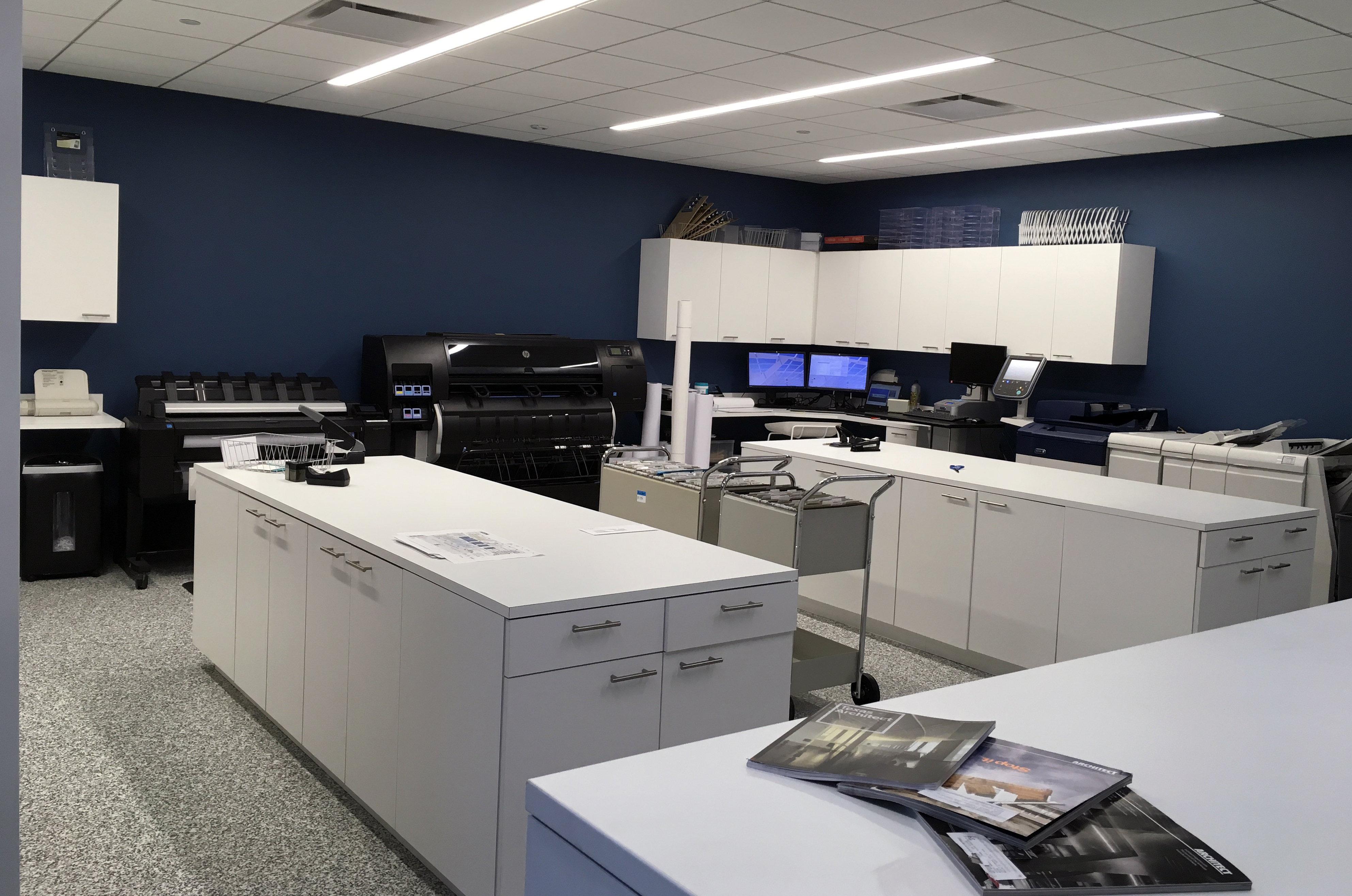The demographic makeup of the workforce has changed dramatically over the past 30 years or more. We are at a cross-section of talent with younger, tech-savvy, individuals who are evolving and growing in number as technological advancements propel changes in the physical workplace. Office culture and design is becoming more portable, social, and collaborative with virtual reality projections and 3-D printing to interactive data driven design and collaborative workstations. The way we work has changed greatly from the hierarchical organizations of just a few years ago, and so have the requirements needed from a workspace.
 As an architect, I’ve worked with many corporations enabling and designing spaces that reflect not only the brand of that organization, but also affect the style in which people perform their best work. Drawing upon our client experiences and looking to the future of our own workforce, we recently turned our design focus onto our own office. AECOM relocated its regional headquarters to north Dallas in an area that overlooks the new Dallas Midtown mixed-use development. With this transition, we drastically shifted our office design and created a flexible, technologically enabled and collaborative environment, implementing new office strategies for the next generation of design and engineering professionals. Here’s where I believe the future of office design is headed:
As an architect, I’ve worked with many corporations enabling and designing spaces that reflect not only the brand of that organization, but also affect the style in which people perform their best work. Drawing upon our client experiences and looking to the future of our own workforce, we recently turned our design focus onto our own office. AECOM relocated its regional headquarters to north Dallas in an area that overlooks the new Dallas Midtown mixed-use development. With this transition, we drastically shifted our office design and created a flexible, technologically enabled and collaborative environment, implementing new office strategies for the next generation of design and engineering professionals. Here’s where I believe the future of office design is headed:
100 Percent Open Concept
At tech companies like Google or Amazon, and even some professional service companies like ours, the idea of collaboration is different. It’s fundamental to our being and more hyperactive than it has ever been before. Things happen faster, so people working in proximity or half a world away are able to collaborate more effectively. We’ve learned spit-balling ideas, testing things out and running data dynamics are most successful when people feel connected in close, connected environments rather than enclosed and isolated in a cube.
You have no doubt heard of the “open floor concept” in office design, but we wanted to take the idea of “openness” even further. Our associates are working alongside our higher-level executives to foster a culture of learning, accessibility, and even transparency in our corporate culture. Companies that provide more “open” office environments that enable teams to work in tandem with full transparency are able to evolve and grow professional acumen faster and make informed decisions more quickly.
Interactive Meetings Spaces
To continue to foster the theme of openness and ultimately a robust team environment, we disbursed intimate four-person meeting spaces where employees can “huddle” and access their work from anywhere in the space through wireless communications. Within the room, a table can slide and physically attach to a wall where there is a large flat panel screen. With robust WiFi network connectivity, the team can integrate their work and demo projects or consult on creating new ones. Having interactive, high-tech, face-to-face meeting spaces reinforces communication and collaboration in any work setting and can lead to new and even unconventional associations that drive unique solutions.
Learning Lab
We thrive on the notion of iterative design solutions or “rapid prototyping,” and one of the features we are most excited about is our new 3D “fab lab” or printing studio. In our industry, we work on developing prototypes and are constantly evaluating design solutions or testing for performance outcomes, which requires immense collaboration across design and engineering disciplines. 3D printing technology is still evolving and in its infancy, but the ability to have a large platform 3D printer for rapid prototyping provides us the space to create and critique our work in order to arrive at the best solutions. This concept of work can be taken to almost any industry. Not all industries will require 3-D printing, but having an environment that fosters learning and exploration further fosters innovation and success. Ours is an industry that thrives in 3D.
Flexibility
We often conceive of our space as a 3D flexible matrix. People can move and modify the space around them in a way that works best for them. They can utilize flex spaces, on-demand conferencing, digital displays, accidental collisions and WiFi networks. They can disconnect from anchored data cabling or recharge as needed on the go. In fact, in our office environment no one has an individual desk or permanent address, which provides even greater awareness, flexibility and collaboration for our teams. Design that encourages flexibility and elevates collaboration is where office design is inevitably headed. Our own space in general could change in the future, but that’s a good thing. It’s an evolutionary experiment where all change is good change. It allows us to research and develop solutions for others and ourselves, because as we know, in a burgeoning age of ubiquitous technology, a lot can change in five or 10 years, and when it does, we’ll be ready.
Steven Janeway is the regional design director at AECOM where he leads the firm’s architectural practice for Texas, Arizona, Colorado, New Mexico, Utah, Oklahoma, Louisiana, Arkansas, and Mississippi.





